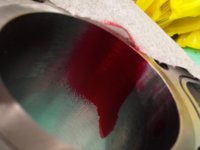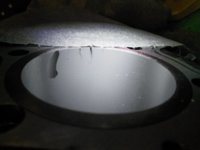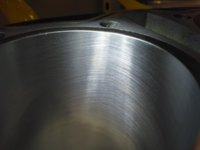switch to allen heads and drill em yourself, remember the low man on the totem pole is going to get your pissy little jobs AND F em up. Besides the sprocket bolts never back out...Not sure what it says about what. There's a machine shop here, only big shop in 30 mi or so. I know they have a good reputation and are very busy. New bldg, great location. I decided kind of lamely that I wanted my rear sprocket bolts drilled for safety wire. I took some there, and when I came back for them the guy who talked to me said they were too hard to drill. Then he said something about using a hand drill. I thought ok, whatever, and when I got them home and opened the bag, two of them were drilled, halfway through at a random place in the threads!
(I was re-using old locking tabs and had forgotten how well new tabs do work)
(kidding)



